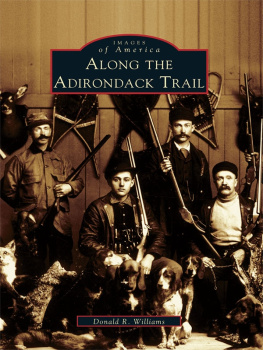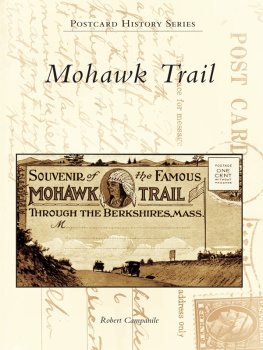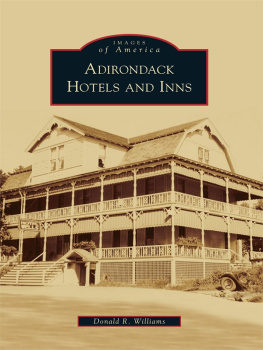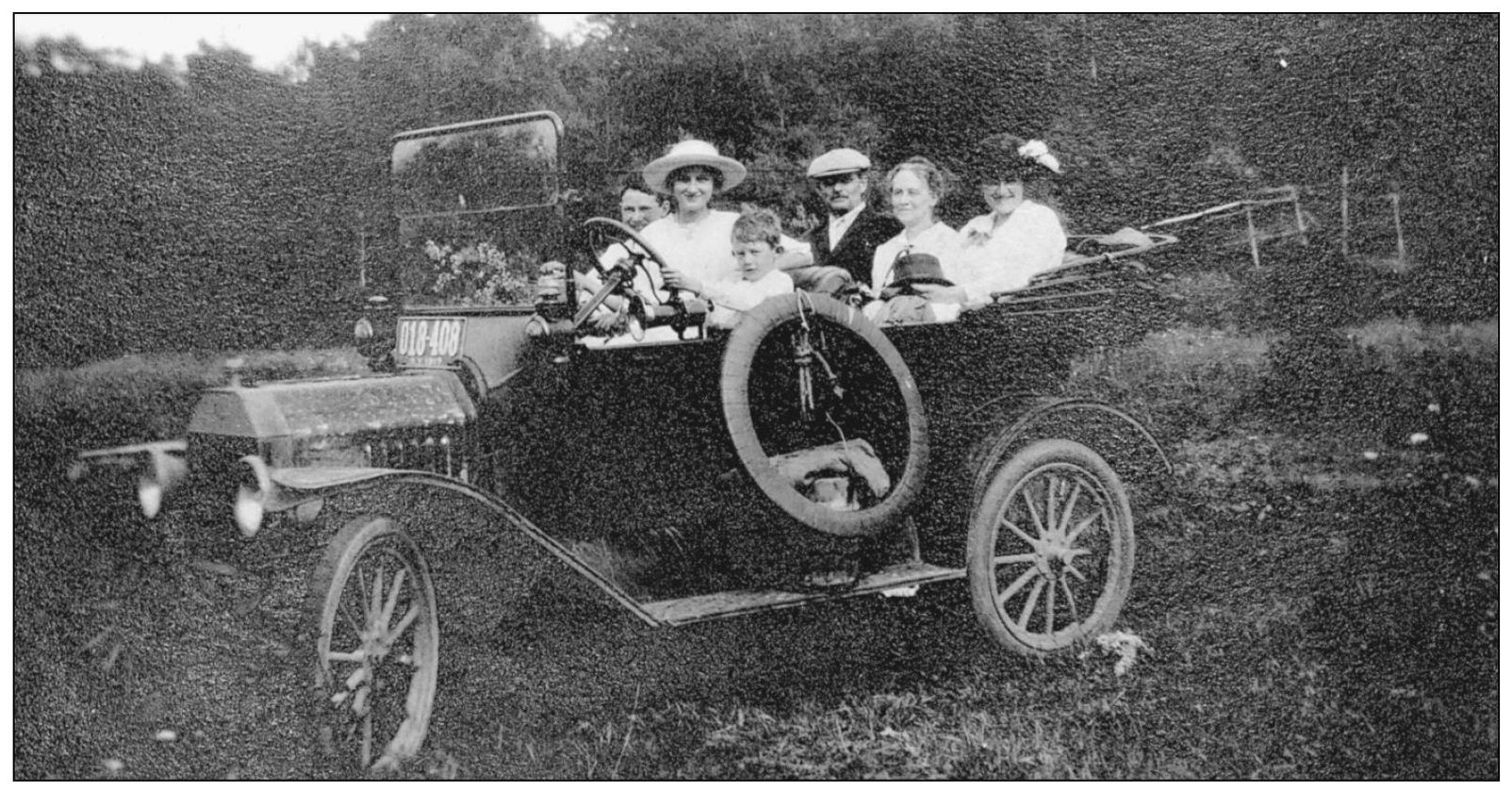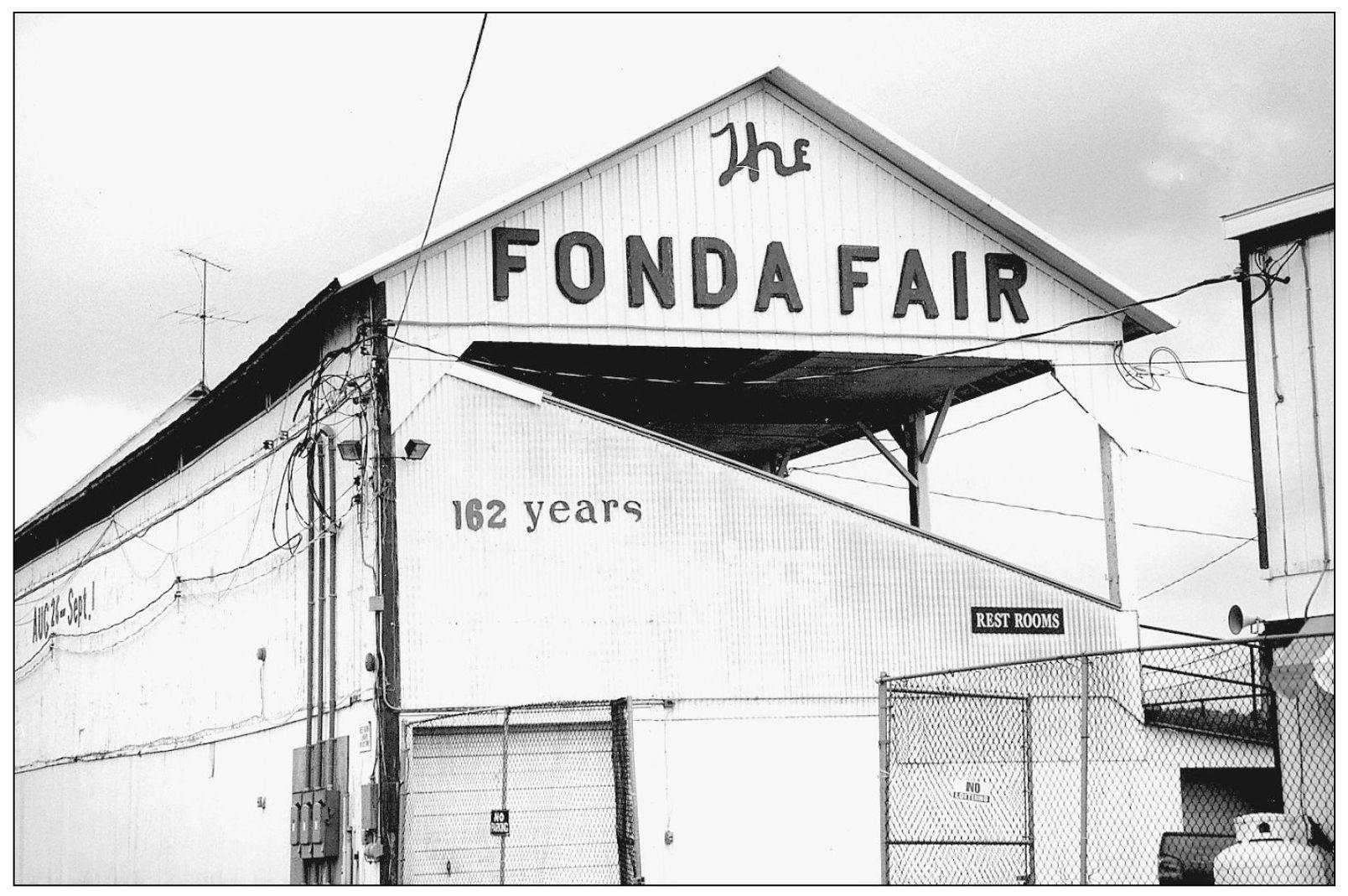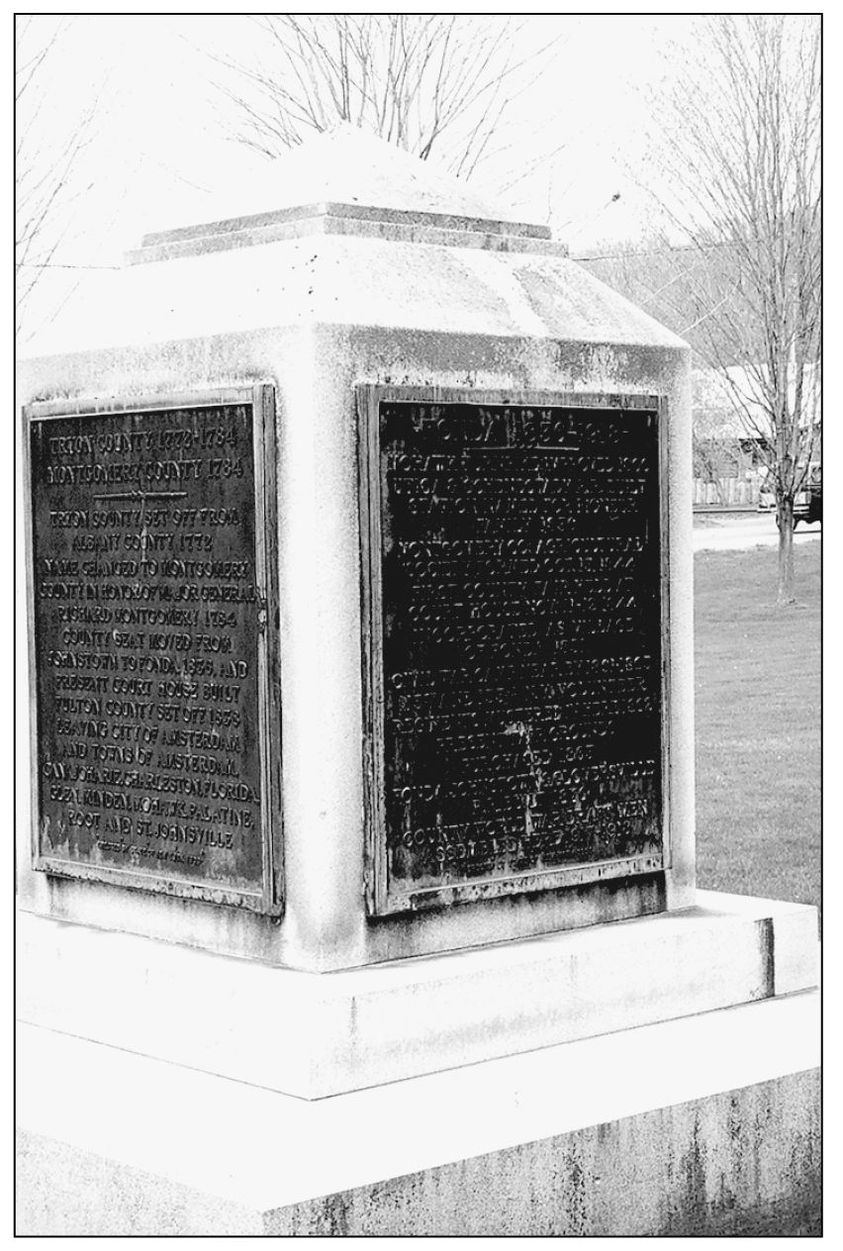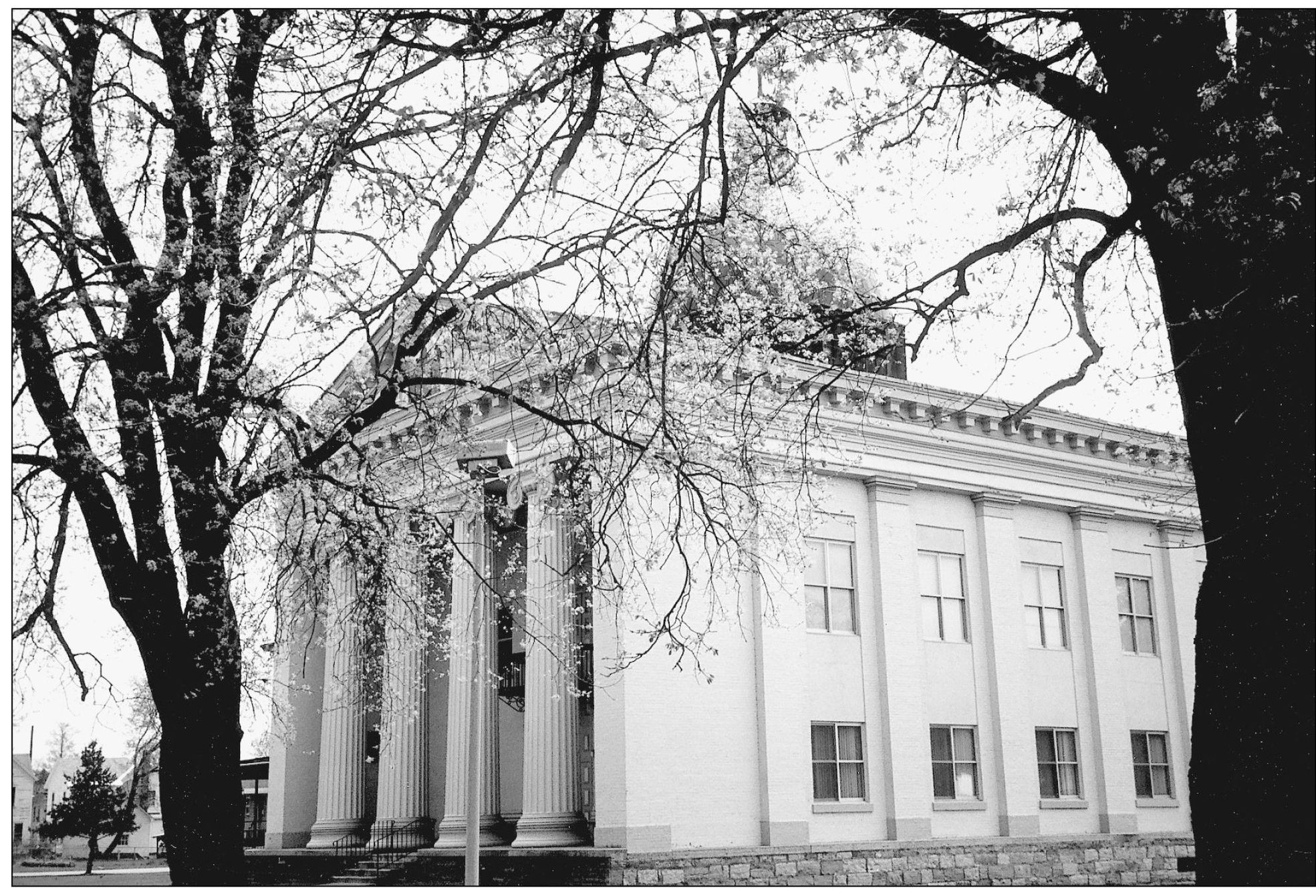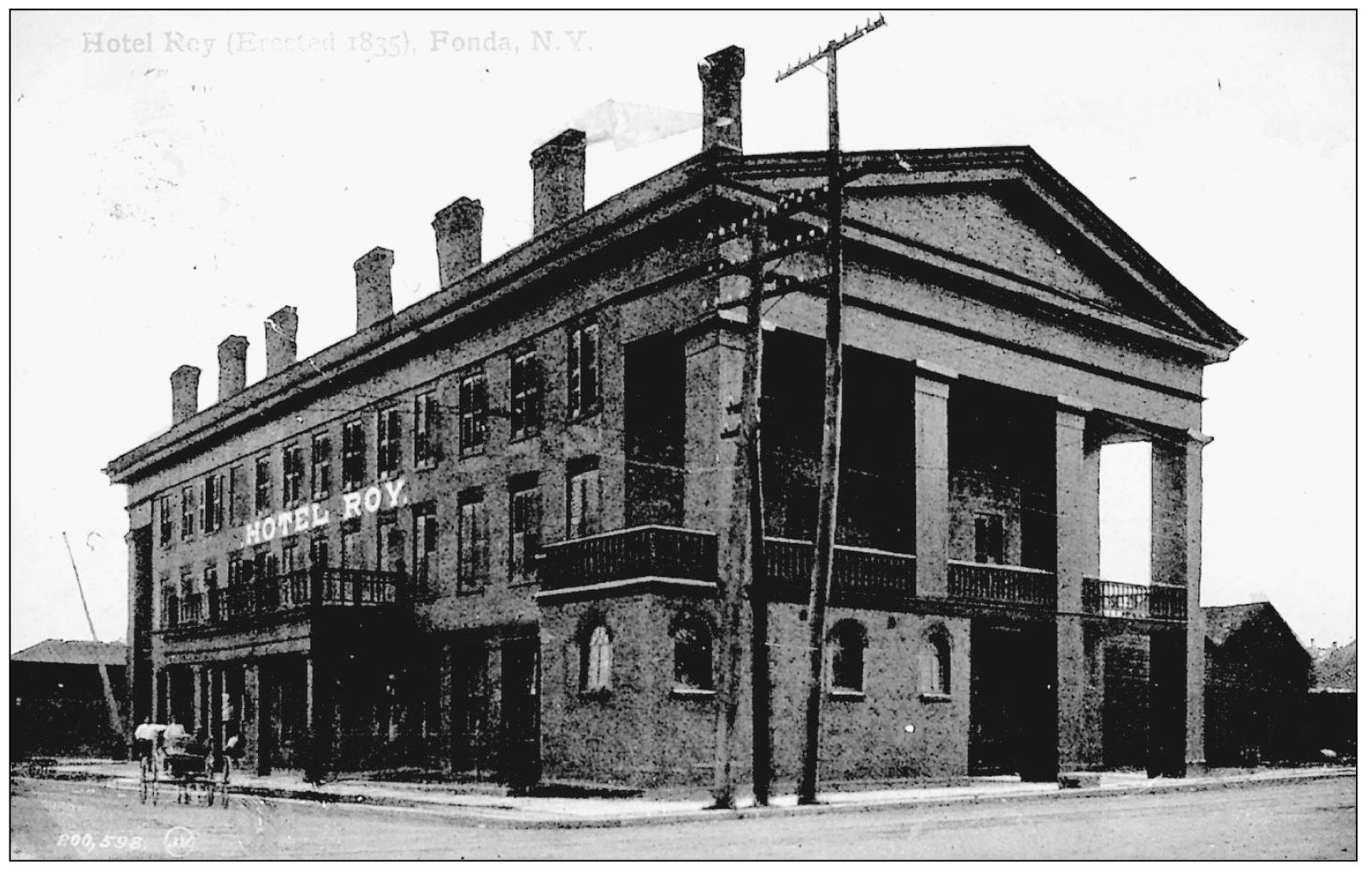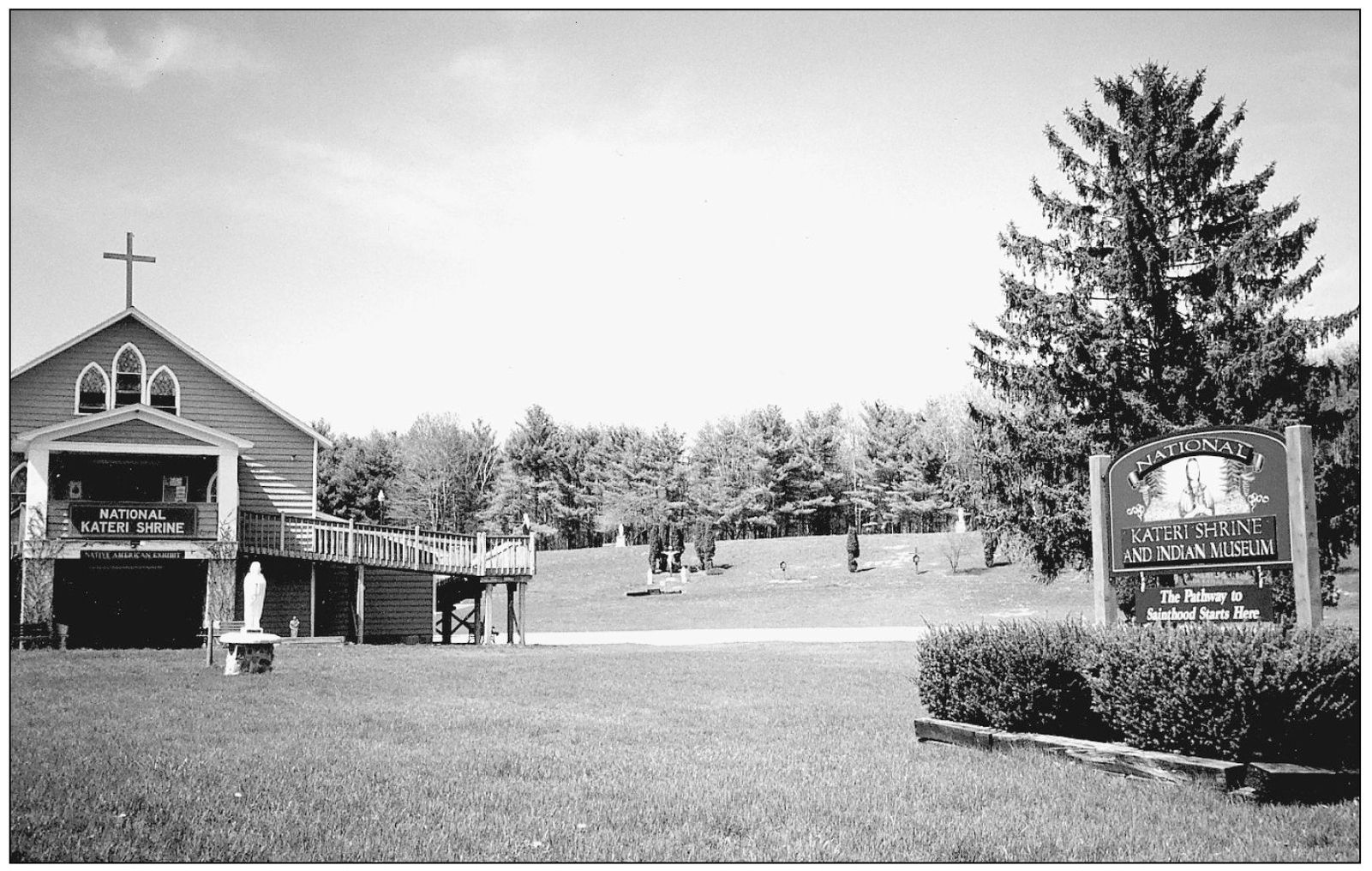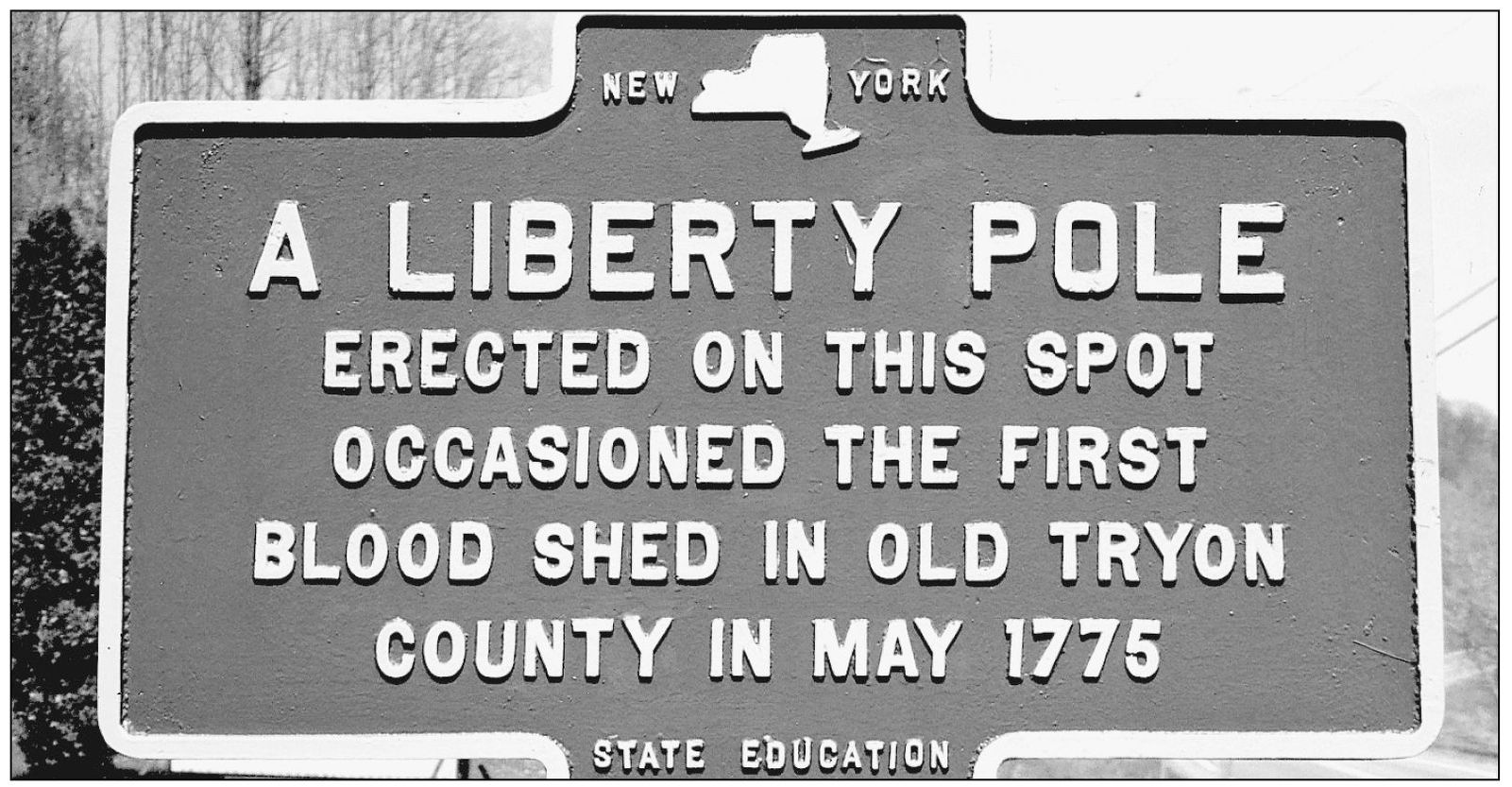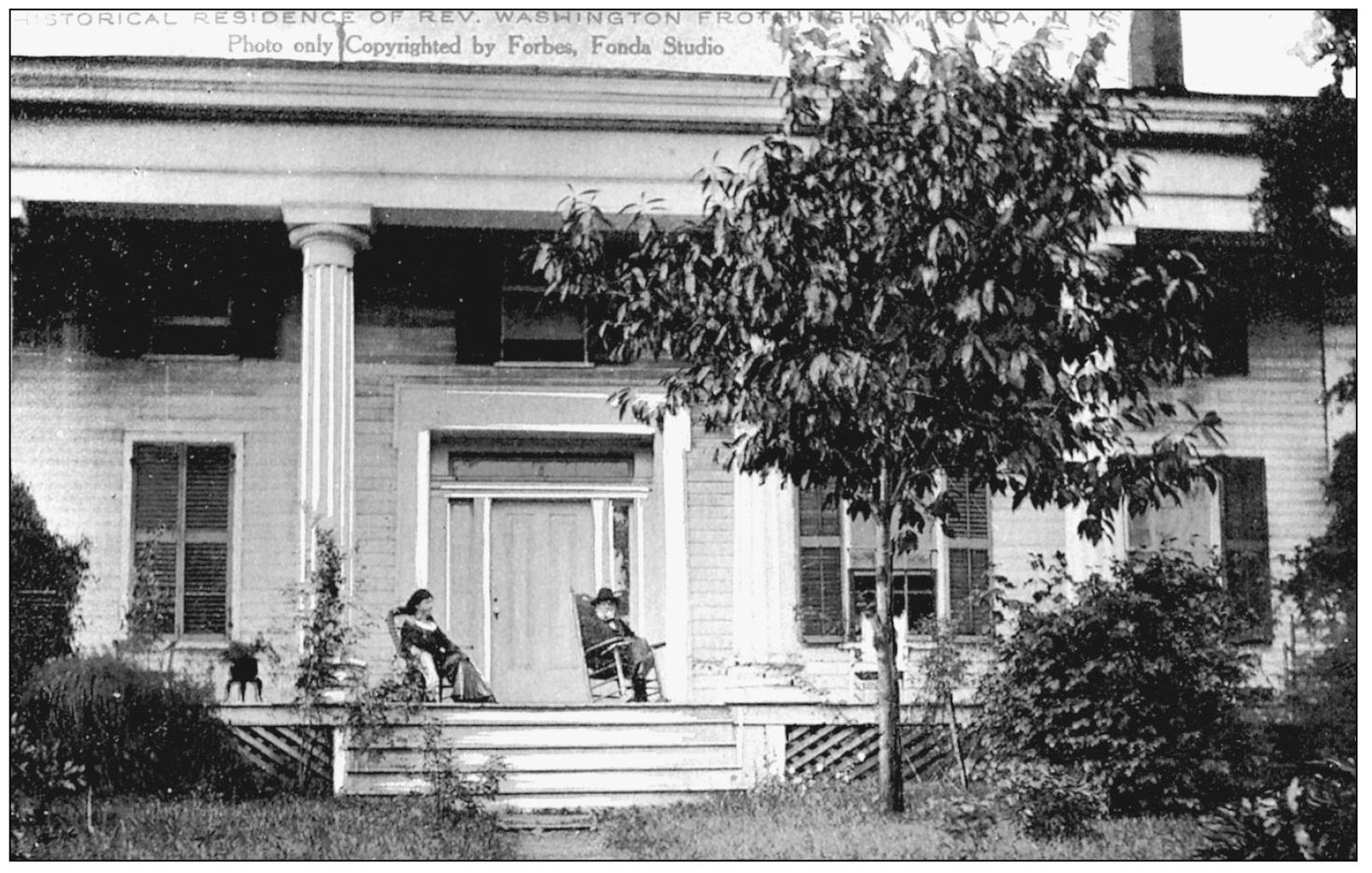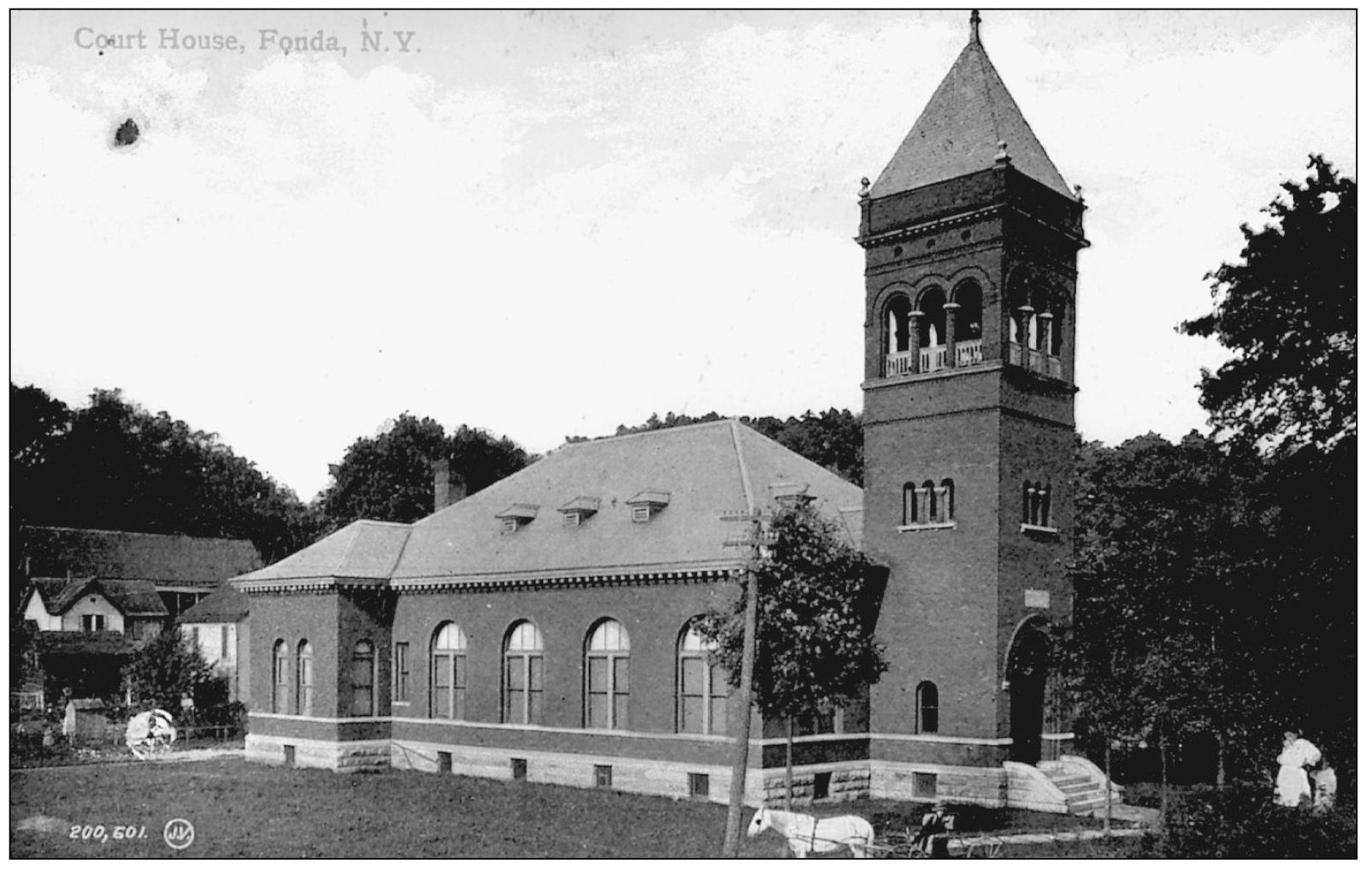One
MOHAWK AND JOHNSTOWN
The Fonda Fair, at the Montgomery County Fairgrounds, celebrated its 162nd year in 2003. The Fulton and Montgomery Counties Fair at Fonda continues to focus on agriculture, presenting ribbons and awards for entries in animal, plant, and craft categories. Exhibits, food, entertainment, the carnival, the midway, and the fireworks are all highlights of the annual event held at the entrance of the Adirondack Trail.
The Fonda Speedway, at the Montgomery County Fairgrounds, began a seasonal auto racing program in 1953. Today, it still draws thousands of fans from all over the country. The half-mile egg-shaped clay oval offers a regular show of modified, sportsman, and street stock racing on Saturdays from April through August. Called the Track of Champions, it hosts some of the best drivers in the Northeast.
Three monuments have been erected on the grounds of the old courthouse at Fonda. This four-sided obelisk traces the history of Caughnawaga from the 1667 Mohawk village to the Tory-Indian raids of the Revolution. On its other three sides are the dates of the establishment of the counties, significant dates of Fonda history, and a short biography of county namesake Maj. Gen. Richard Montgomery. The other monuments are a memorial to the 115th and 153rd Regiments of the Civil War and a tree-planting monument to honor the delegates to the 1788 Constitution Ratification Convention.
Montgomery County, with its county seat in Johnstown, was growing. The Utica and Schenectady Railroad was routed through Fonda, which, with its central location, was made the new county seat in 1836. Erected in Fonda was this copper-domed courthouse, one of the finest examples of Greek Revival architecture in the state, the current site of the Montgomery County Department of History and Archives. In 1838, Montgomery County was divided, and part of it became Fulton County, of which Johnstown became the county seat.
Once established as a railroad town, Fonda became well provided with hotels. By 1878, there were three hotels on Main Street. The three-story Fonda Hotel, with an imposing colonnade at each end, was the largest. It appeared in print in 1840. Later, it may have been renamed Hotel Roy, shown here, erected in 1838 and destroyed by fire in January 1909. The Johnson House had 35 guest rooms and an attached livery stable. The third hotel took its name from a local creek that the Native Americans called Cayadutta, or muddy waters. Three other hotels were located on side streets.
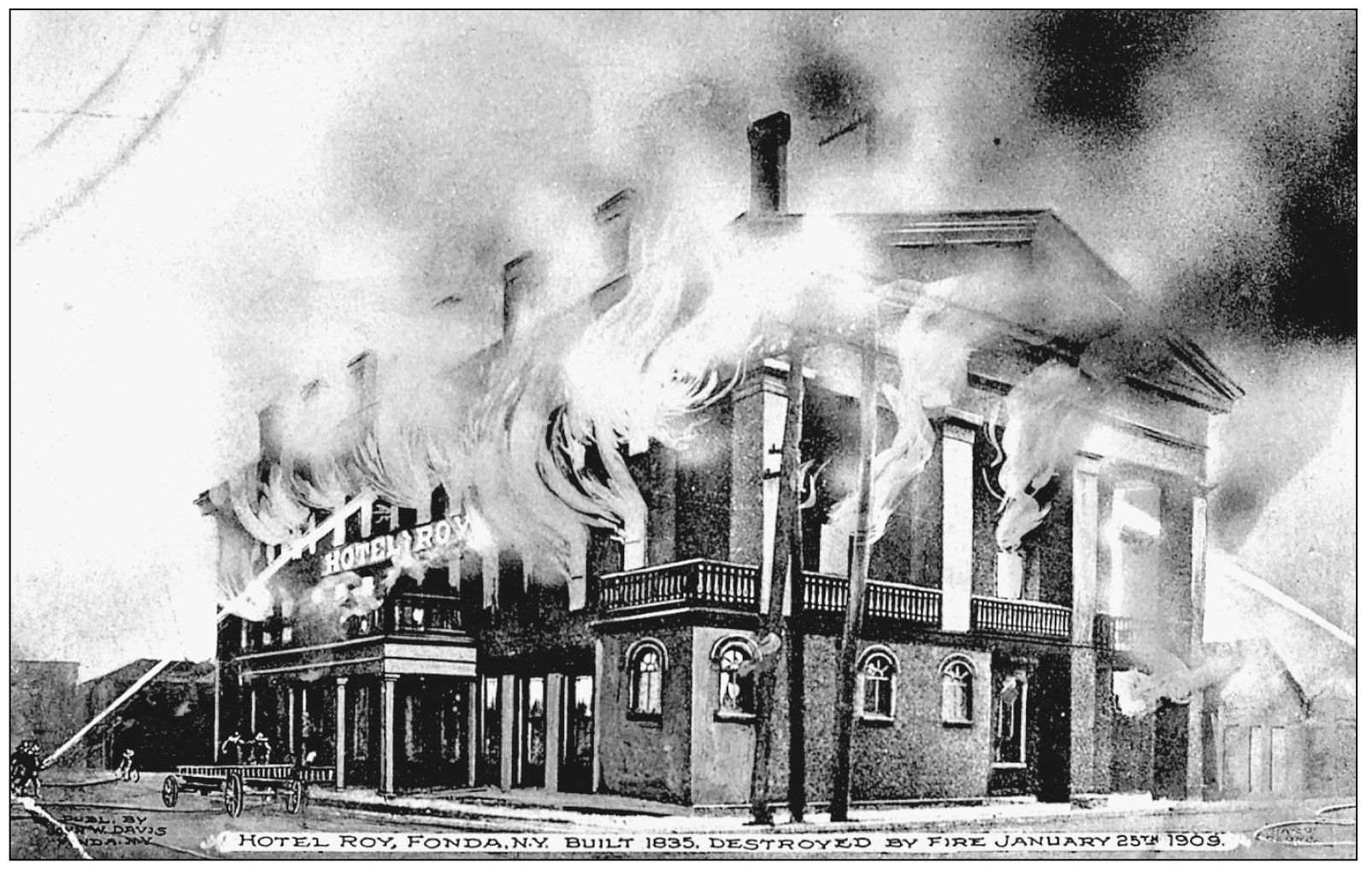
In 1980, Kateri Tekakwitha became the first Native American to be beatified by the Roman Catholic Church. The Mohawk Indian girl was baptized at Fonda in 1676 by early Jesuit missionaries. She died in 1680 at the age of 24 after leading an earthly life of love, gentleness, and kindness. Today, the Mohawk village where she spent half her life has been excavated, and her home and the site of her baptism have become the Fonda National Shrine of Blessed Kateri Tekakwitha and Museum.
In a time of unrest, some 300 Whigs gathered at the Tekakwitha Shrine and erected a liberty pole to express their support of the Colonial policy toward England. Speaking for the loyalists and supported by a force of men with pitchforks and knives, Sir William Johnsons nephew Guy Johnson told the patriots that the power of the crown would overcome them. Jacob Sammons called Johnson a liar and a traitor. Sammons was pushed to the ground, beaten, and sent down the road. The group dispersed, and the first skirmish of the Revolution was over.
In the 1800s, Rev. Washington Frothingham was an active minister, as well as a journalist, philanthropist, and author of several books. He wrote the massive History of Montgomery County in 1892. He made a bequest for the establishment of the Frothingham Free Library, which is still operating on Fondas Main Street today. His home is shown here.

